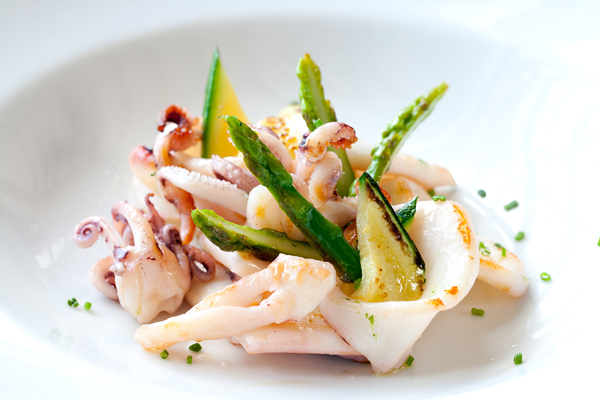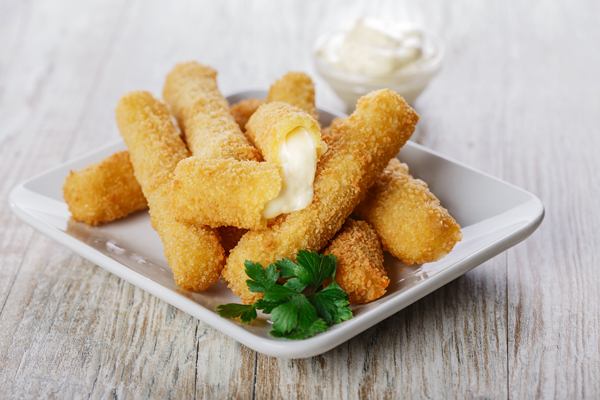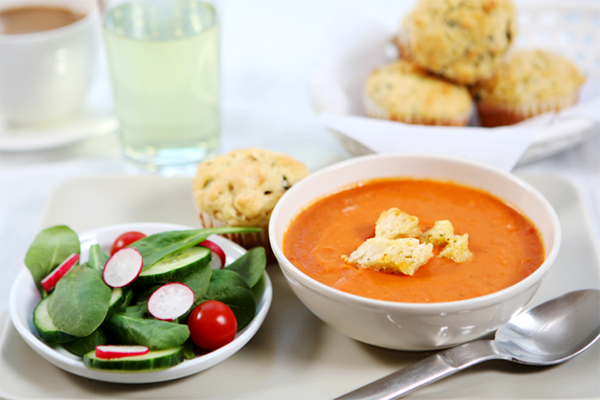It’s easy to understand why rapper Post Malone recently told Tonight Show host Jimmy Fallon that he celebrates “every major life milestone” at the Olive Garden.
Italian restaurants have a welcoming atmosphere and a menu full of comfort foods — what’s not to love?
But the food at Italian restaurants is often “loaded with fat and calories,” says Andrea N. Giancoli, MPH, RD. So does that mean you have to give up your favorite dining spot in order to stay healthy?
Nope — we’ve rounded up the healthiest foods to order at an Italian restaurant (along with a few menu items to avoid).
What Are the Healthiest Options at Italian Restaurants?
Navigating the menu at an Italian restaurant can be a bit daunting, but Giancoli uses one trick to help zero in on the healthier fare: Look for the veggies.
“As with any restaurant, the more vegetable-packed dishes you order, the better,” she says.
Veggies help fill you up without a ton of extra calories — and you don’t have to settle for plain old steamed veggies.
“Spinach and garlic sautéed in a little olive oil is both delicious and healthy,” Giancoli adds. “Just make sure you ask them to go light on the oil.”
Here are seven other healthy Italian foods you can enjoy (in moderation, of course) without wrecking your healthy eating goals.
1. Grilled calamari
Fried calamari, a.k.a. squid, can be a calorie-laden appetizer — but its grilled counterpart can be a healthier option.
Unprepared calamari clocks in at just 99 calories and 17 grams of protein per 4-ounce serving.
Of course, calamari is often drizzled with oil when it’s grilled, which adds extra calories — so just be sure to request that the chef goes easy on the oil.
2. Bruschetta
Bruschetta offers a balance of macronutrients: carbohydrates (bread), fresh vegetables (tomatoes), and healthy fats (olive oil).
Again, ask them to go light on the oil — olive oil “does have a lot of calories, so it’s easy to overdo it without realizing,” says Giancoli.
3. Caprese salad
While the fresh mozzarella in a caprese salad packs a calorie punch — 72 calories per ounce — the tomatoes and sweet basil balance it out. And — you guessed it — try to limit the olive oil to keep the calorie count down.
4. Mussels in white wine
Like calamari, mussels offers plenty of protein — 27 grams in a 4-ounce serving.
And although white wine sauce is often made with butter, Giancoli says it’s still a healthier option because you typically don’t polish off the whole bowl of sauce: “As long as you’re not licking up every drop or soaking up the sauce with bread, you’re good.”
5. Gnocchi
Wait — gnocchi?! You might be surprised to see these pasta dumplings on the “good” list, but it depends on what type of gnocchi you order.
Gnocchi can be “a pretty heavy dish,” Giancoli notes — especially if made with ricotta cheese or topped with pesto.
The trick, she says, is to order potato gnocchi — it’s made with fewer ingredients, and has around 250 calories and 5 grams of protein per 1-cup serving.
Order it with checca sauce if available, and — you guessed it — ask them to go light on the oil.
6. Charcuterie
Ordering a charcuterie board packed with meats is a smart move “even though it’s comprised of all meat and cheese,” says Giancoli.
The reason: You typically share it as an appetizer, so you won’t load up on fat and calories before your entree even arrives.
7. Minestrone
Minestrone is one of the healthiest soup options at Italian restaurants because “you get a ton of vegetables with only a little bit of pasta,” says Giancoli.
An eight-ounce serving of broth-based minestrone at Olive Garden is only 110 calories with one gram of fat, making it an ideal option to help fill you up before the main course.
What Foods I Should Avoid At Italian Restaurants?
Rule number one for Italian restaurants: If it’s fried or made with cream, it’s probably not the healthiest option. That said, sometimes the wording on the menu can trick you.
Here’s what to watch out for when you order.
1. Mozzarella sticks
“They’re just packets of fat,” says Giancoli. Need we say more?
2. Eggplant parmesan
Sure, eggplant is a healthy food that has potassium, niacin, and other nutrients — but at most Italian restaurants, this dish is served deep-fried and covered in cheese.
“You don’t necessarily have to avoid it altogether,” says Giancoli. “Just order it as an appetizer and have a couple of slices, instead of as a meal.”
(Or you could always whip up a healthier eggplant Parmesan at home.)
3. Fried calamari
While the grilled version is healthier, the breading and oil in fried calamari add a lot of unnecessary fat and calories.
4. Caesar salad
Salad is healthy, right? Not necessarily. “Caesar salads are made with a lot of cheese and oil — not exactly light fare,” says Giancoli.
If you do order it, she adds, make sure you ask for the dressing on the side so you can enjoy the flavor without overdoing it.
5. Breadsticks
“Italians are famous for their bread,” says Giancoli. It can be hard to resist a basket of breadsticks, especially when they arrive at the table while you’re still waiting for your meal.
“If you’re trying to cut down on calories, ask them to take it away or not bring it at all,” Giancoli advises.
6. Fettuccine alfredo
It’s best to avoid cream-based dishes like fettuccine alfredo because “they have sky-high amounts of saturated fat and calories,” Giancoli says.
For example, a side order of fettuccine alfredo at Carrabba’s Italian Grill is 690 calories with 49 grams of fat. And a dinner-sized portion at Olive Garden has over 1,000 calories.
7. Zuppa toscana
Zuppa toscana is packed with veggies like kale and celery, along with protein-filled beans and other healthy ingredients — but the broth is cream-based instead of broth-based, which increases the calorie count.
A serving of zuppa toscana at Olive Garden has 220 calories — double the calories in their minestrone.
4 Hacks for Eating Healthy at Italian Restaurants
Here are a few other simple tricks for staying (relatively) healthy when dining at an Italian restaurant.
1. Look for lower-calorie menus
Don’t want to spent time scouring the menu for the healthiest options (or trying to resist the eggplant parm)?
Many Italian restaurant chains now offer special lower-calorie menus that feature lighter versions of popular favorites.
2. Get it to go
The portion sizes at Italian restaurants can be epic, so ask your server to put half of your meal in a to-go box before you start eating.
“Most of us just eat what’s in front of us,” says Giancoli. It’s easier to stop when you can’t see the rest.
Bonus: You don’t have to worry about what to cook for dinner tomorrow!
3. Get soup and salad first
You can’t overeat if you’re already full from healthier fare.
“If you have a salad without a cream-based dressing, or a broth-based soup like minestrone first, it can help you eat fewer calories overall,” says Giancoli.
4. Add a parmesan kick
While it may seem counterintuitive to add extra cheese to an Italian dish, parm is actually “very flavorful, so you don’t need much to add that extra punch to your food,” Giancoli says.
If possible, add it yourself so you can control how much goes on your food.




